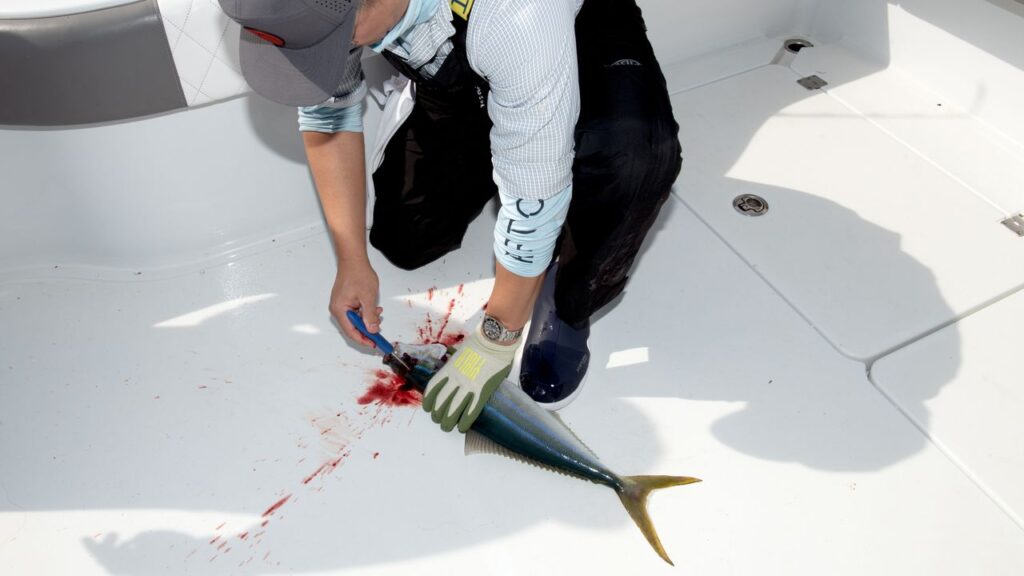“He said something to the effect of ‘If you don’t kill the fish, you can’t feel pono,’ ” Tsui says. When Lionel would give him fish to bring home, he could see the difference. The flesh was firmer when he cut it. There was no ‘fishy’ smell. It kept longer. He felt good eating it raw.
For Tsui, it was a double revelation: Working with huge, warm-bodied fish, he was forced to consider for the first time what it meant to hunt and kill another living being. At the same time, he could see the intimate connection between how he chose to treat that animal and its value.
“Before that, the value of fish for me was measured in vanity: Hold the fish out to the camera. Push it toward the camera so it looks bigger,” he says. “My eureka moment was when it came to me that the value of the fish is actually not about vanity, it’s measured in dollars. It opened my eyes to the concept that some consideration for the welfare of the animal was a precondition of quality.”
By the time Tsui headed back to the mainland, to study law at UNC, he had made an internal decision. No longer was he somebody who fished just for fun or for sport.
“I said to myself: I am a meat fisherman.”
Having spent time on a boat with Tsui, I can testify that he still speaks fluent sport fisherman; his native language may be Bro. But he is an expert code-switcher. When he is in persuasive mode, he speaks in a lawyer’s cadence—patient, careful, and in full sentences. He also has a poetic streak. To hear him expound on, say, the life cycle of Chesapeake Bay rockfish (known elsewhere as striped bass) is to simultaneously want to eat, catch, and hug that fish: how in summer they stress out in the bay’s warm, oxygen-deprived shallows, growing greenish and wan, but, come autumn, they gorge on peanut bunker until they have the shoulders of high school wrestlers. (“Not college wrestlers; those would be in the open water,” Tsui says.) By November, as he tells it, there is no better distilled expression of the Mid-Atlantic Seaboard. And yet, because it has only a local market and limited ability to travel, November rockfish doesn’t command a high price.
“Let’s say a very enterprising chef in Chicago wants to tell the story for the first time of what American seafood is or could be. The opportunity to express fully a seasonal pattern of Maryland rockfish is not available to them, because it can’t get there. Which is strange because somehow, magically, fish from the market in Tokyo get there every day,” Tsui says. “What ike jime allows you do is to say, Fuck local.”
Perhaps you’ve noticed the preponderance of ¯Ora King and Faroe Islands salmon on menus in recent years—the first a trademarked brand name for chinook salmon farmed in New Zealand, the second the same Atlantic salmon you find in your local Walmart but farmed on an archipelago in the middle of the North Atlantic. They have taken over the world in part because fish farmers in those countries employ “stunner-bleeders” to quickly kill and bleed each fish—in other words, a crude version of automated ike jime. Meanwhile, the start-up company Shinkei Systems is working on refining that process with a machine that uses computer vision (to his credit, its 26-year-old founder, Saif Khawaja, does not use the term AI) to more precisely locate the hindbrain on fish of varying sizes and species. The company has raised some $8 million.


